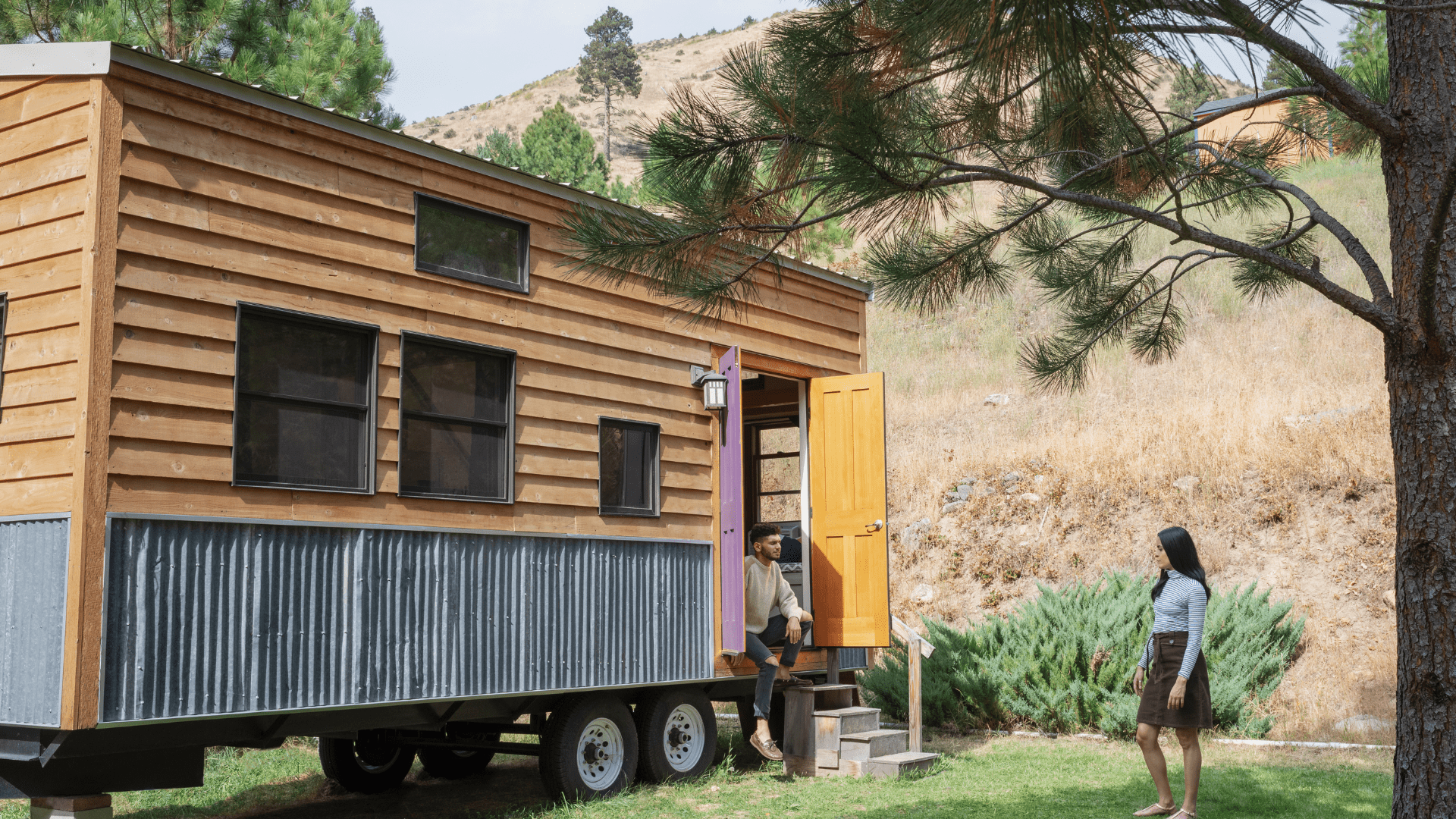Those that have been watching the real estate world for a little while will know that the tiny home movement has surged in popularity, particularly those in the younger age groups, fueled by a growing awareness of environmental sustainability, minimalist living and a need for affordable housing solutions.
Tiny homes are typically defined as homes with less than 40 square metres of living space, and they represent more than just a growing trend. These homes are at the forefront of a sustainability revolution that has been picking up speed. They are reshaping how we think about the space we need, the resources we use and our footprint on the environment.
Embracing Minimalism and Efficiency
One of the core principles that is attracting many to the tiny home movement is minimalism. Living in a tiny home almost forces you to reevaluate your possessions and prioritise what is truly important. This shift towards a simpler lifestyle not only reduces clutter but also decreases the overall environmental footprint. Fewer possessions mean less demand for raw materials, reduced energy consumption in manufacturing, and lower waste generation.
Tiny homes are designed to maximise every inch of space, often incorporating multi-functional furniture and innovative storage solutions. This efficient use of space translates into reduced energy needs for heating, cooling, and lighting. With less space to manage, tiny homeowners can often utilise renewable energy sources such as solar panels, further enhancing their environmental credentials.
Reducing Resource Consumption
Traditional homes tend to consume a significant amount of resources, from building materials to energy. Tiny homes, by comparison, use far fewer materials in construction. This not only lowers the environmental impact of building but also minimises the amount of waste generated during the construction process.
Many tiny homes are built with sustainable materials, such as reclaimed wood, recycled steel, and eco-friendly insulation. Tiny home builders often look to use materials that have a lower environmental impact and are sourced responsibly, and beneficially the smaller size of tiny homes means less energy is required for heating and cooling, which can significantly reduce overall energy consumption.
Lowering Carbon Footprints
The smaller size of tiny homes means that homeowners are leaving a smaller carbon footprint. With less space to heat and cool, tiny homes naturally require less energy, which can be further optimised with the use of energy-efficient appliances, LED lighting, and advanced insulation techniques.
Many tiny homes can also be equipped with systems that reduce water usage, such as composting toilets and rainwater harvesting systems.
Tiny homes often appeal to those seeking a more sustainable lifestyle, and as a result, many owners are dedicated to reducing their carbon footprints through the choice of sustainable building practices, energy-efficient technologies, and eco-friendly living habits.
Promoting Sustainable Communities
The tiny home movement is not just about individual living spaces; for many, it is also about creating sustainable communities. Tiny home villages and eco-communities are emerging in Western Australia and across the country as a way to group tiny homes together, sharing resources and fostering a sense of community. These communities often focus on sustainability, with shared gardens, communal spaces, and collective efforts to reduce waste and energy consumption.
Through creating these communities, residents can share resources such as tools, appliances, and transportation options, further enhancing the sustainability of their lifestyle. And as with many, these communities provide opportunities for social interaction and support, creating a more connected and engaged population.
Affordable Housing Solutions
Affordable housing is the thing on many minds at the moment, and in addition to their environmental benefits, tiny homes offer a practical solution to the growing affordability crisis in housing as well as the lack of housing supply.
With rising real estate prices, many individuals and families are finding it increasingly difficult to secure affordable housing. Tiny homes offer an alternative that is both cost-effective and adaptable.
The lower cost of construction and maintenance makes tiny homes an attractive option for those seeking affordable housing solutions. They can be particularly beneficial for people in high-cost areas or for those who are looking to downsize and reduce their living expenses.
They are also a great starter home for younger generations looking to get their foot into the real estate market, and while they may not have the same value as a more traditional home, tiny homes are a great way to get out of the rental cycle.
Overcoming Challenges
While tiny homes offer numerous benefits, they are not without challenges. Zoning laws and building codes can sometimes pose obstacles, as many areas have regulations that are not tailored to the unique characteristics of tiny homes. Additionally, living in a small space requires careful planning and organisation to ensure that all needs are met within the limited space available.
Despite these challenges, the tiny home movement is quickly gaining traction and pushing changes in regulations and building practices. Advocacy groups and tiny home enthusiasts are working to address these issues with local councils, pushing for more flexible zoning laws and promoting awareness of the benefits of tiny living.
The Future of Tiny Homes
The sustainability revolution driven by tiny homes is really just beginning and as more people recognise the environmental, economic, and lifestyle benefits of tiny living, the movement is only going to continue growing. Advances in technology and design will further enhance the functionality and efficiency of tiny homes, making them an even more viable and attractive option for a wide range of individuals.
There’s no argument that tiny homes are not a one-size-fits-all solution (no housing is really), but they represent a significant shift towards more sustainable living practices. By embracing minimalism, resource efficiency, and community, tiny homes are leading the way in creating a more sustainable future.
Looking to join the growing number of tiny home owners? Our experienced team can help you design, and build your new tiny home right here in Perth. We’d love to help you reach your tiny home goals.

